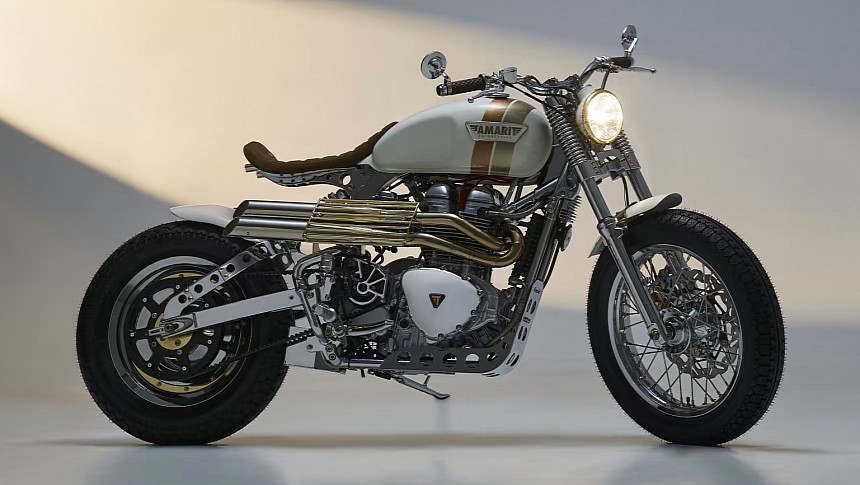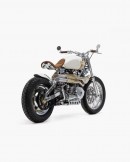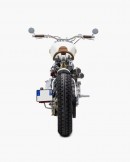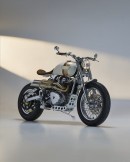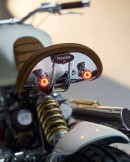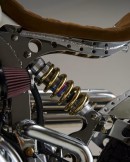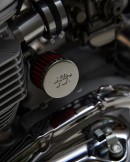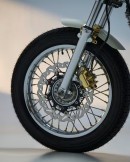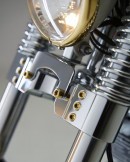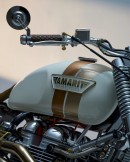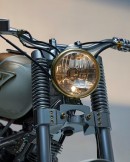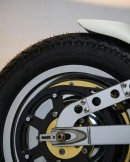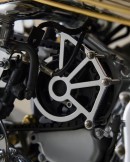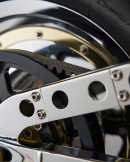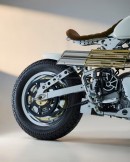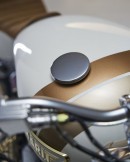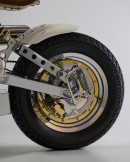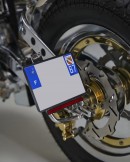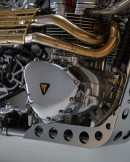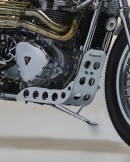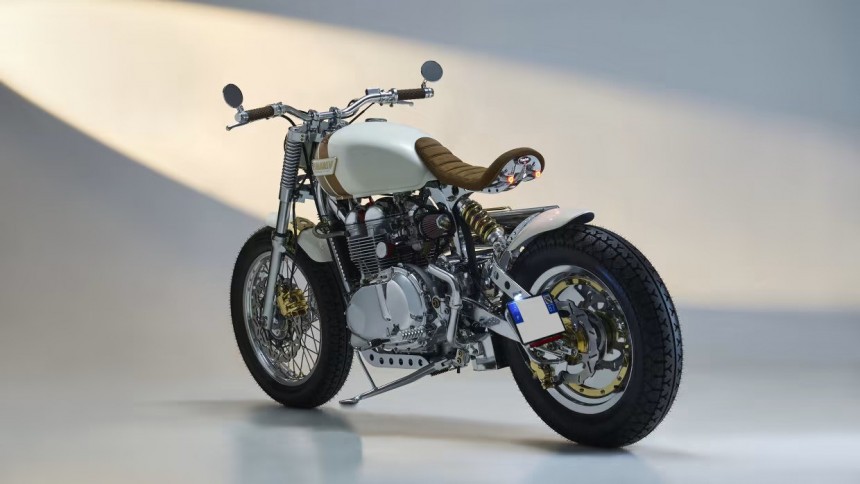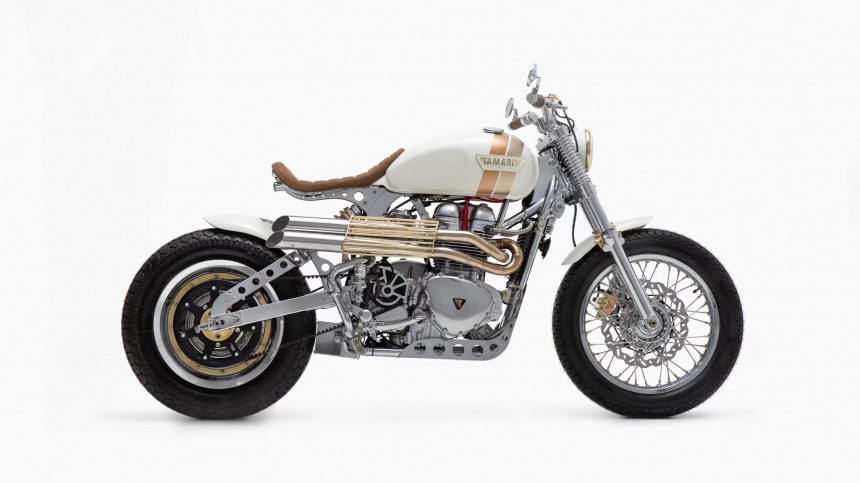The bike-modding connoisseurs over at Tamarit Motorcycles are quickly approaching their 150th project, and there are still two years to go before the firm celebrates its 10th anniversary. That means they’ve been building around 20 motorcycles per year on average, as the workshop has only been around since 2015. By all accounts, the pace at which they operate is truly astounding!
No two custom Triumphs from this Spanish outfit are alike, despite the fact that Tamarit’s specialists often reuse parts from their ever-growing aftermarket catalog. They manage to do this while maintaining a high degree of authenticity on every build, so you’re guaranteed to have a blast when scrolling through their project archive. If you ask me, the said portfolio will probably reach 200 entries before Tamarit turns ten.
Pictured above these paragraphs is the 137th custom marvel listed on the company’s website, and it goes by the name of Phantom. The commission came from a French client who sought something exquisite, in the same tune as motorcycles like Emerald or Circe. A Bonneville T100 acted as the starting point for Tamarit’s transformation, but most of its stock hardware was promptly shown the door.
What remains of the original Bonnie is the parallel-twin engine, main frame, forks, and fuel tank, yet this doesn’t mean that Tamarit left them unchanged. Embellished with external springs for visual effect, the forks are now held in place via CNC-machined triple clamps. At the back, the guys did away with the standard twin-shock arrangement, making room for a centrally-mounted Hagon Nitro monoshock.
Down low, the shock absorber attaches to a heavily modified swingarm, while its top section is bolted to a new subframe just large enough to support the seat pan. As for the bobber-style saddle itself, the crew had it upholstered in what looks like suede or Alcantara, also adding a small aluminum badge with the shop’s logo in the process. Curving upward as it works its way back, the seat pan reveals dual-function LEDs attached to its underside.
There’s an oval badge in the center, too, depicting the project’s name and number like we’ve seen on some of Tamarit’s other builds. The bespoke sorcery continues lower down, where you will now find a stylish rear fender that connects to the swingarm by means of a drilled bracket. Furthermore, the license plate bracket also hangs off the Bonneville’s revised swingarm on the left-hand side.
A lenticular 16-inch wheel occupies the unsprung sector at the back, sporting circular brass-plated attachments and a retro-looking Continental tire. The same rubber can be found at the front, this time covering a laced hoop that measures 18 inches in diameter. Ample stopping power is guaranteed by aftermarket brake discs on both ends.
Tamarit used brass mounting hardware to fit a small but effective front fender, and the firm’s proprietary Hummer skid plate has been attached to the lower frame tubes. It’s a part we’ve seen on many of their previous machines, as it was developed to work well with just about any style. Similar to the solid wheel and reworked suspension at six o’clock, this module serves both a cosmetic and functional purpose.
We’ve already talked about the rear-end lighting equipment, but let’s see what’s going on up north. The Spanish gurus refrained from using LED componentry here for the sake of Phantom’s classic looks, so they added a vintage-style headlamp instead. Its outer ring was covered in brass like so many other goodies worn by this custom beauty.
Up top, the headlight housing also holds the instrumentation, which comprises a single Motoscope Mini dial from Motogadget’s range. The same brand supplied a fresh control unit for the electronics, as well as a pair of bar-end turn signals for the motorcycle’s cockpit area. These are attached to each end of a low-profile handlebar along with round rear-view mirrors.
Additionally, the handlebar is equipped with Kustom Tech levers, subtle switchgear, and groovy aftermarket grips. The Triumph’s carbureted parallel-twin mill saw some significant changes, as well, now breathing through premium K&N air filters. It’s the new exhaust that’ll really grab your attention, though.
These high-mounted pipes were built from scratch out of stainless-steel, then chrome-plated, and ultimately topped with a couple of very interesting heat shields. We’re not sure how effective these will be at reducing temperatures, but they most certainly look the part! Tamarit converted the T100’s chain final drive to a belt, with the end goal being longer service intervals and less noise.
Last but not least, the Phantom’s color scheme does an excellent job at tying everything together. It employs a glossy white base on the fuel tank and fenders, with the former also gaining beige and copper accents along with Tamarit badges. Pretty much everything else on this two-wheeled marvel is tastefully plated in either nickel, chrome, or brass.
Pictured above these paragraphs is the 137th custom marvel listed on the company’s website, and it goes by the name of Phantom. The commission came from a French client who sought something exquisite, in the same tune as motorcycles like Emerald or Circe. A Bonneville T100 acted as the starting point for Tamarit’s transformation, but most of its stock hardware was promptly shown the door.
What remains of the original Bonnie is the parallel-twin engine, main frame, forks, and fuel tank, yet this doesn’t mean that Tamarit left them unchanged. Embellished with external springs for visual effect, the forks are now held in place via CNC-machined triple clamps. At the back, the guys did away with the standard twin-shock arrangement, making room for a centrally-mounted Hagon Nitro monoshock.
Down low, the shock absorber attaches to a heavily modified swingarm, while its top section is bolted to a new subframe just large enough to support the seat pan. As for the bobber-style saddle itself, the crew had it upholstered in what looks like suede or Alcantara, also adding a small aluminum badge with the shop’s logo in the process. Curving upward as it works its way back, the seat pan reveals dual-function LEDs attached to its underside.
A lenticular 16-inch wheel occupies the unsprung sector at the back, sporting circular brass-plated attachments and a retro-looking Continental tire. The same rubber can be found at the front, this time covering a laced hoop that measures 18 inches in diameter. Ample stopping power is guaranteed by aftermarket brake discs on both ends.
Tamarit used brass mounting hardware to fit a small but effective front fender, and the firm’s proprietary Hummer skid plate has been attached to the lower frame tubes. It’s a part we’ve seen on many of their previous machines, as it was developed to work well with just about any style. Similar to the solid wheel and reworked suspension at six o’clock, this module serves both a cosmetic and functional purpose.
We’ve already talked about the rear-end lighting equipment, but let’s see what’s going on up north. The Spanish gurus refrained from using LED componentry here for the sake of Phantom’s classic looks, so they added a vintage-style headlamp instead. Its outer ring was covered in brass like so many other goodies worn by this custom beauty.
Additionally, the handlebar is equipped with Kustom Tech levers, subtle switchgear, and groovy aftermarket grips. The Triumph’s carbureted parallel-twin mill saw some significant changes, as well, now breathing through premium K&N air filters. It’s the new exhaust that’ll really grab your attention, though.
These high-mounted pipes were built from scratch out of stainless-steel, then chrome-plated, and ultimately topped with a couple of very interesting heat shields. We’re not sure how effective these will be at reducing temperatures, but they most certainly look the part! Tamarit converted the T100’s chain final drive to a belt, with the end goal being longer service intervals and less noise.
Last but not least, the Phantom’s color scheme does an excellent job at tying everything together. It employs a glossy white base on the fuel tank and fenders, with the former also gaining beige and copper accents along with Tamarit badges. Pretty much everything else on this two-wheeled marvel is tastefully plated in either nickel, chrome, or brass.
